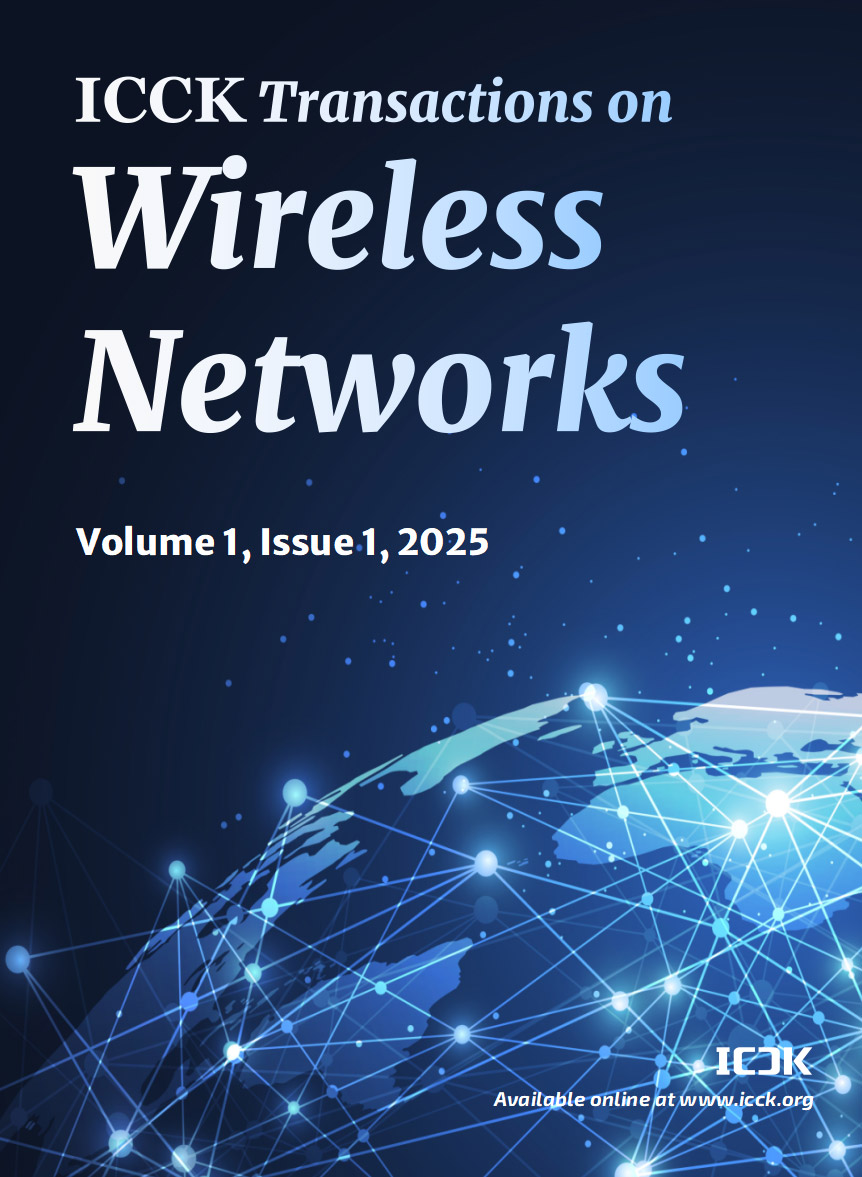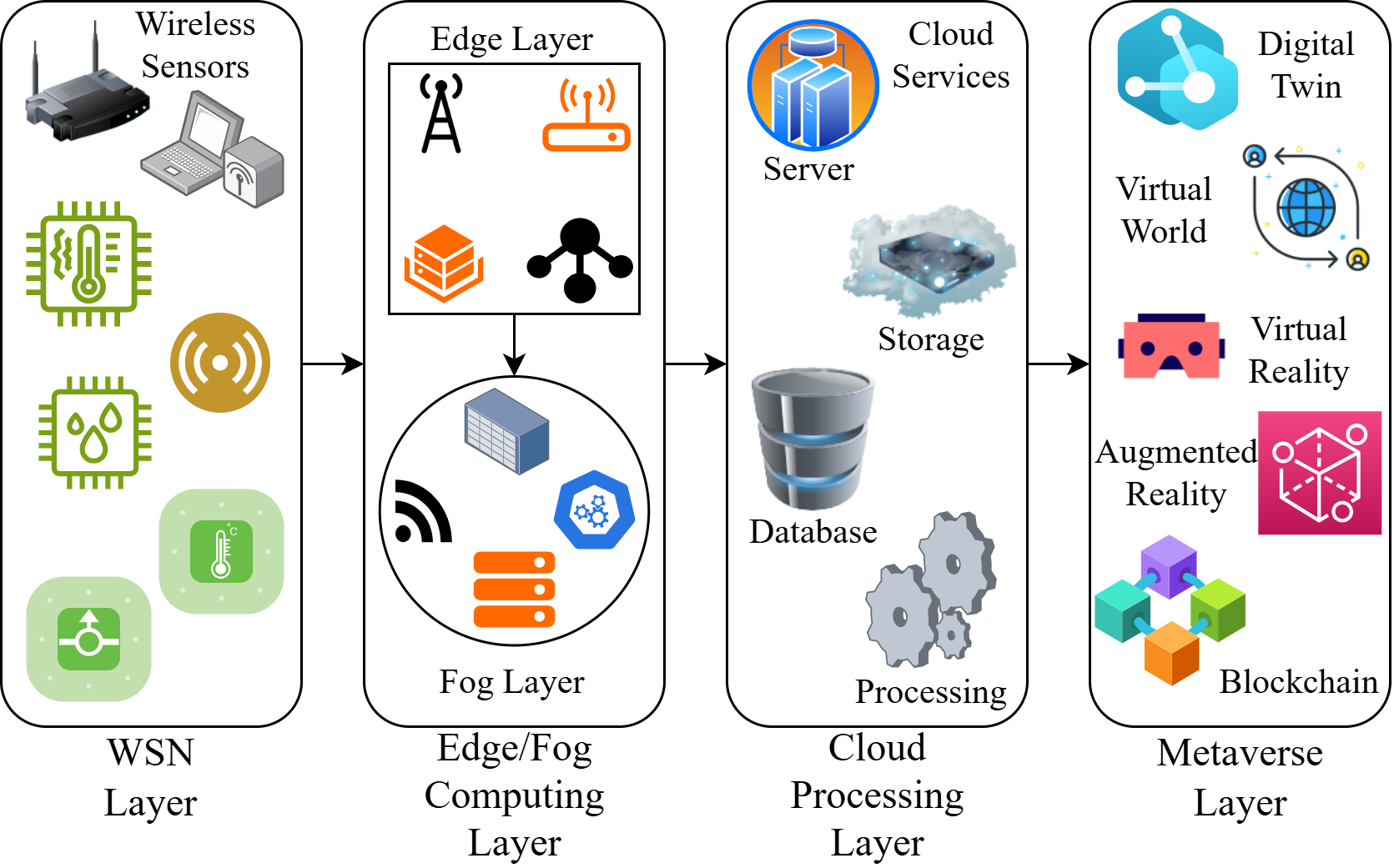Abstract
Wireless Sensor Networks (WSNs) have emerged as a fundamental technology in modern digital ecosystems, enabling real-time data acquisition and communication. Their integration with the metaverse enhances immersive experiences by providing real-time environmental data, motion tracking, and networked interactions. However, the fusion of WSNs with the metaverse introduces significant security challenges, including network vulnerabilities, data privacy concerns, latency issues, and scalability constraints, which hinder seamless operation. To address these challenges, Artificial Intelligence (AI), Machine Learning (ML), and Deep Learning (DL) techniques have been leveraged to enhance network security, optimize resource management, and improve data processing efficiency. AI-driven models facilitate anomaly detection, predictive maintenance, and real-time decision-making, making WSN-based metaverse environments more resilient and adaptive. A hybrid DL and ML model is proposed, integrating Convolutional Neural Networks (CNNs) and Bidirectional Long Short-Term Memory (Bi-LSTM) for feature extraction, followed by XGBoost for classification. The model achieves 99.64% accuracy, 96.39% balanced accuracy, 99.65% precision, 99.64% recall, and 99.73% ROC-AUC score, outperforming existing approaches. The results demonstrate its effectiveness in detecting security threats within WSN-based metaverse environments while ensuring computational efficiency and real-time attack detection.
Data Availability Statement
Data will be made available on request.
Funding
This work was supported without any funding.
Conflicts of Interest
The authors declare no conflicts of interest.
Ethical Approval and Consent to Participate
Not applicable.
Cite This Article
APA Style
Vashisht, S., & Rani, S. (2025). Bridging WSN and the Metaverse: An AI-Powered Hybrid Model for Cyber Threat Mitigation. ICCK Transactions on Wireless Networks, 1(1), 32–41. https://doi.org/10.62762/TWN.2025.750033
Publisher's Note
ICCK stays neutral with regard to jurisdictional claims in published maps and institutional affiliations.
Rights and permissions

Copyright © 2025 by the Author(s). Published by Institute of Central Computation and Knowledge. This article is an open access article distributed under the terms and conditions of the Creative Commons Attribution (CC BY) license (
https://creativecommons.org/licenses/by/4.0/), which permits use, sharing, adaptation, distribution and reproduction in any medium or format, as long as you give appropriate credit to the original author(s) and the source, provide a link to the Creative Commons licence, and indicate if changes were made.


 Submit Manuscript
Edit a Special Issue
Submit Manuscript
Edit a Special Issue

 Copyright © 2025 by the Author(s). Published by Institute of Central Computation and Knowledge. This article is an open access article distributed under the terms and conditions of the Creative Commons Attribution (CC BY) license (https://creativecommons.org/licenses/by/4.0/), which permits use, sharing, adaptation, distribution and reproduction in any medium or format, as long as you give appropriate credit to the original author(s) and the source, provide a link to the Creative Commons licence, and indicate if changes were made.
Copyright © 2025 by the Author(s). Published by Institute of Central Computation and Knowledge. This article is an open access article distributed under the terms and conditions of the Creative Commons Attribution (CC BY) license (https://creativecommons.org/licenses/by/4.0/), which permits use, sharing, adaptation, distribution and reproduction in any medium or format, as long as you give appropriate credit to the original author(s) and the source, provide a link to the Creative Commons licence, and indicate if changes were made. 